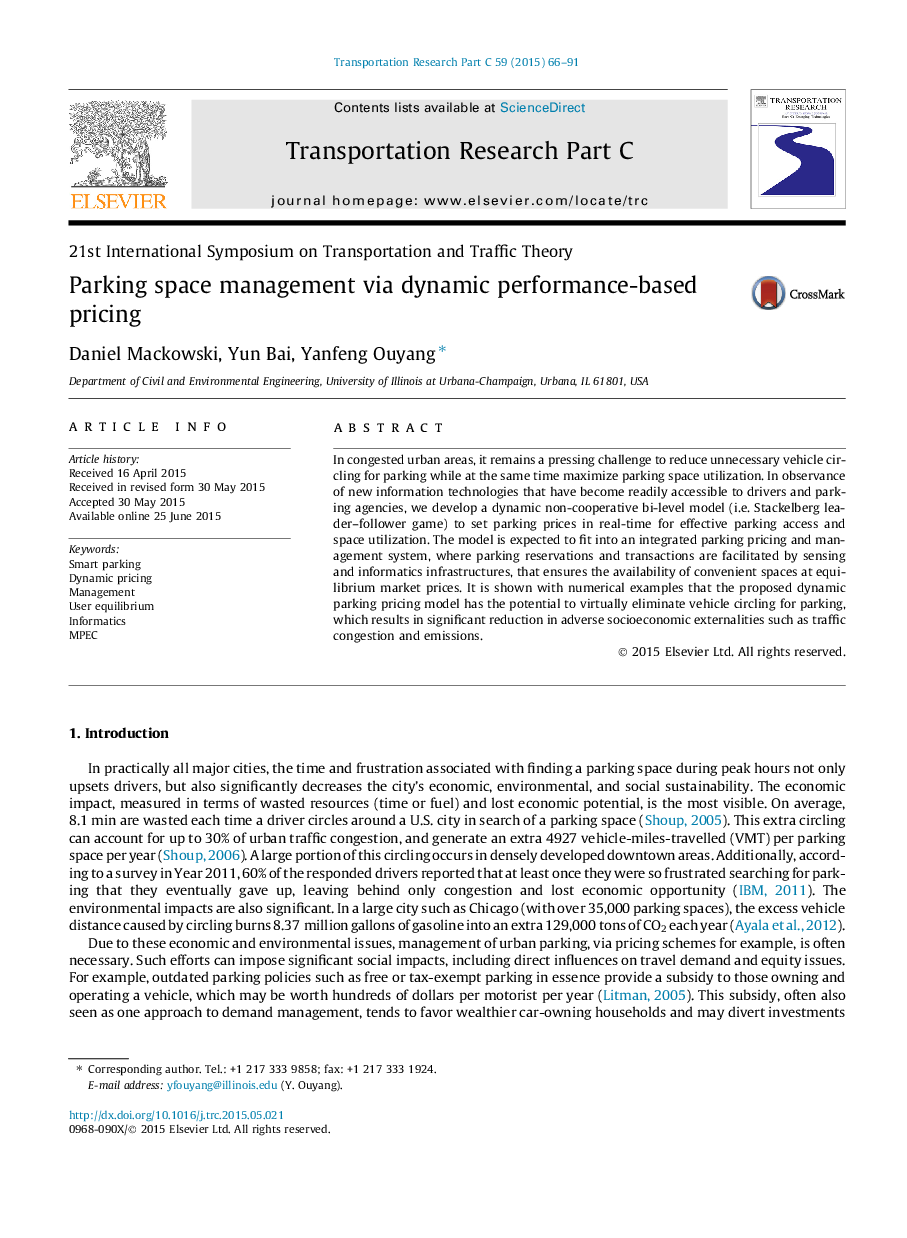| Article ID | Journal | Published Year | Pages | File Type |
|---|---|---|---|---|
| 524858 | Transportation Research Part C: Emerging Technologies | 2015 | 26 Pages |
•A dynamic, demand based real-time pricing model to optimally allocate parking spaces.•Considers user competition and market equilibrium to set system optimal policies.•Multiple objectives, e.g. optimize occupancy level, economic surplus, and revenue.•Numerical examples show improved occupancy distribution and less vehicle circling.•Practical solution techniques for complex MPECs in dynamic settings.
In congested urban areas, it remains a pressing challenge to reduce unnecessary vehicle circling for parking while at the same time maximize parking space utilization. In observance of new information technologies that have become readily accessible to drivers and parking agencies, we develop a dynamic non-cooperative bi-level model (i.e. Stackelberg leader–follower game) to set parking prices in real-time for effective parking access and space utilization. The model is expected to fit into an integrated parking pricing and management system, where parking reservations and transactions are facilitated by sensing and informatics infrastructures, that ensures the availability of convenient spaces at equilibrium market prices. It is shown with numerical examples that the proposed dynamic parking pricing model has the potential to virtually eliminate vehicle circling for parking, which results in significant reduction in adverse socioeconomic externalities such as traffic congestion and emissions.
